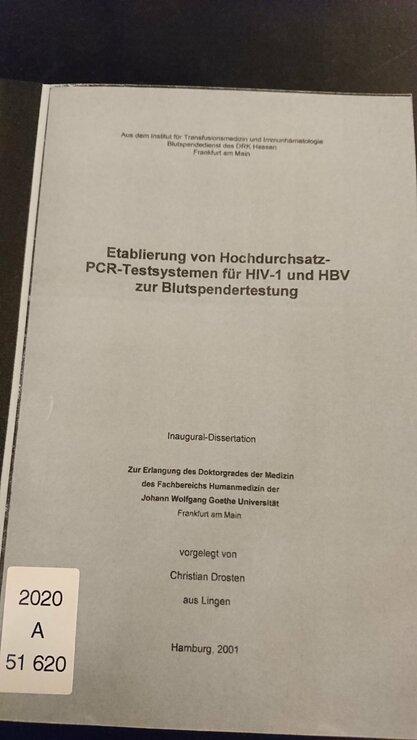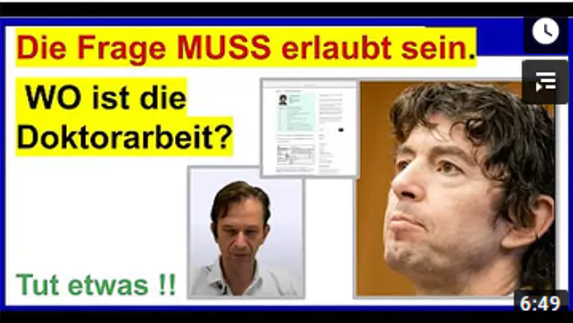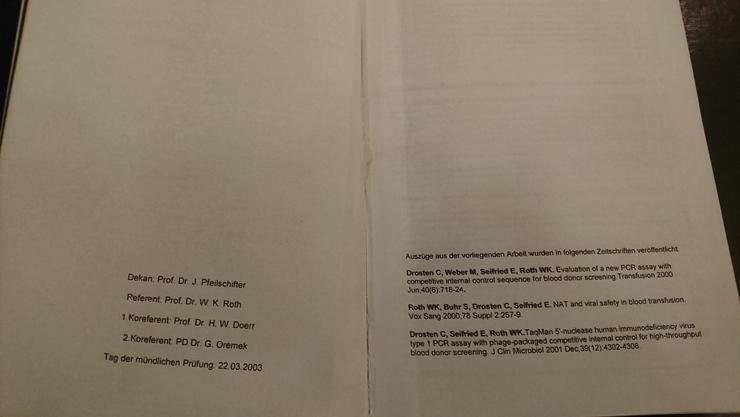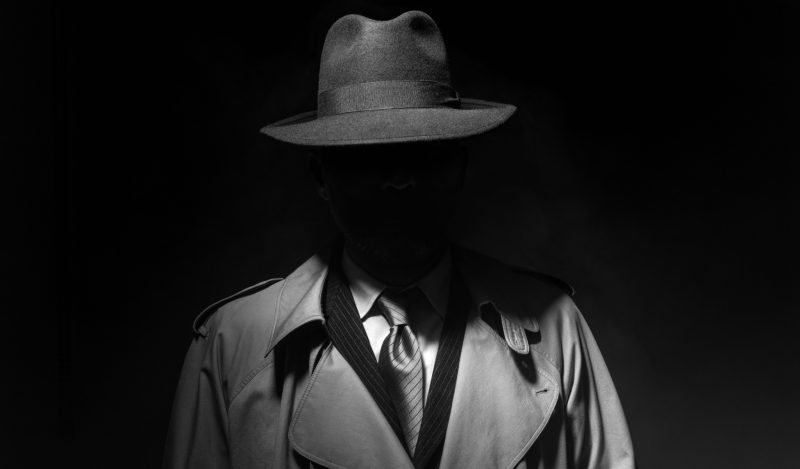A clip of Christian Drosten, at the World Health Summit in Berlin, calling for media to suppress “disinformation” went somewhat viral on X recently. “We shouldn’t have [just] anybody who has some academic degree talking about the heart of the issue in the middle of a pandemic,” Drosten said. In contrast to such untrustworthy “anybodies,” Drosten invoked “experts who are really experts,” “who are…qualified to summarise the state of knowledge:” scientists who are “top scientists.”
Presumably, Drosten would put himself in the latter company. No mere anybody is he. He is, after all, the chair of the virology department at the prestigious Charité university teaching hospital in Berlin – which, incidentally, hosts and organises the annual World Health Summit on behalf of the German government – and he was, of course, the developer of the notoriously hypersensitive Covid-19 PCR-protocol which helped to create the Covid-19 pandemic via the detection of billions of “asymptomatic cases.”
But how many outside of Germany know that serious doubts have been raised about Drosten’s own qualifications and the validity of his own degree? To start with, as Thomas Maul has noted on Achse des Guten, one of Germany’s most influential alternative online media, full (or “W3”) professors in Germany are normally supposed to have completed a kind of “super-PhD” known as the Habilitation and there is no question that Drosten, despite being a full professor, has not done that.
But, more troublingly still, questions have been raised about whether he really even completed a PhD. The root of the problem is that his PhD thesis was nowhere to be found from the time of its alleged completion in 2000, 2001, 2002, or 2003 depending on the source – sic!: for some examples in Germany, here – until mid-2020, when copies suddenly turned up in German National Library (DNB) branches at precisely the time that enquiring minds were starting to publicly wonder whether it even existed at all.
As can be seen in the below picture of the cover page of a copy at the DNB Leipzig branch, the call number clearly indicates that the document was first included in the catalogue in 2020: the year in which Drosten both rose to international prominence as the developer of the Covid-19 PCR and became Germany’s quasi-official Corona oracle, so to say.


According to Corona Transition, a website which was critical of Germany’s Covid-response and played a key role in the controversy, the document was only included in the DNB holdings in July. (The original Corona Transition site is no longer available online, but see here from the Wayback Machine.)
A since-removed video titled “The Question MUST be permitted. Where Is the Dissertation?” was posted on YouTube in late June. See the below screenshot.


Undoubtedly more to the point, by his own account, Markus Kübacher, the main protagonist in the search for Drosten’s dissertation, began making inquiries about it already in April. (See here from Corona Transition via the Wayback Machine.) Kübacher is a chemist who accuses Drosten of committing scientific fraud – and Goethe University Frankfurt, the degree-granting institution, of aiding and abetting in it.
In October 2020, the university published a statement which was evidently supposed to put the controversy to rest and which would be dutifully cited by German “fact-checking” organizations in the spirit of “Move along, nothing to see here.” But, as Maul notes, the university’s statement in fact raises more questions than it answers.
In particular, the statement says that sometime during the course of 2020, “the only remaining original copy” of Drosten’s thesis in the possession of the Goethe University faculty of medicine was examined to determine whether it was “suitable” for library use and was determined not to be so.
This was supposedly “for reasons of conservation.” But in an earlier email cited by Kübacher in a July 2020 tweet, a university spokesperson explained, more precisely, that none of the copies (n.b.: in the plural) originally submitted by Drosten could be used for libraries since they had suffered “water damage:” apparently due to flooding “in large parts of the university clinic a few years ago, by which the archive of the doctoral office was also affected.”
This modern-day, higher-educational version of “the dog ate my homework” got a somewhat different twist from another university official who, Kübacher reports, told him in a phone conversation that there had only ever been one copy in the university’s possession and it had been damaged by drops of water from a leaky pipe running along the ceiling of the basement in which it was kept!
In any event, the copies which turned up in the DNB branches in summer 2020 are thus not in fact copies that were in the possession of Goethe University or copies of any such copy. Rather, according to the university’s October statement, Drosten himself provided the university an additional copy still in his possession and Drosten’s personal copy and additional copies made from it were then provided to the libraries.
The university insists that Drosten’s copy is identical with the copy in the university’s possession. But it is unclear how it could know this in light of the “water damage” which supposedly made the latter unsuitable for library use.
Moreover, as Kübacher and others have noted, even supposing the document now available in the DNB system is in fact Drosten’s dissertation, it is hard to see how it could ever have been accepted as a doctoral thesis. For, as the Goethe University statement puts it, it is “based on” three previously published journal articles and these articles are all jointly authored by Drosten and multiple other authors. One of these authors is none other than the thesis director, Willi Kurt Roth. Indeed, Roth is even the lead author on one of the articles.
Front matter in the DNB document, as can be seen below, cites these same three articles, indicating that they contain “excerpts” from the dissertation. This presumably means that parts of the articles, although published in English, and of the supposed thesis are substantively identical. How then could the latter have been accepted as proof of an independent contribution to scholarship, as is required virtually all around the world and also in Germany, as Kübacher has pointed out?


Moreover, the front matter contains further anomalies. Under the names of the committee members, including the thesis director Roth, the date of the dissertation defense is given as March 3, 2003. But as can be seen from the cover page above, the text was supposedly completed in 2001.
Why did it take Drosten two years – or, according to Goethe University Frankfurt’s alleged timeline, at least 15 months – to defend his thesis? According to the university’s account, this too is not a problem and was merely due to the extreme excellence of the work, since a third opinion had to be gathered to confirm the summa cum laude bestowed by the first two readers. But the document is only 122 pages long and the text proper, at most 106. (See DNB catalogue entry here.)
Finally, Kübacher and other critics have pointed to one last oddity about the supposed date of the dissertation defense. March 22, 2003 was a Saturday. Who defends their dissertation on a weekend?
Join the conversation:


Published under a Creative Commons Attribution 4.0 International License
For reprints, please set the canonical link back to the original Brownstone Institute Article and Author.









